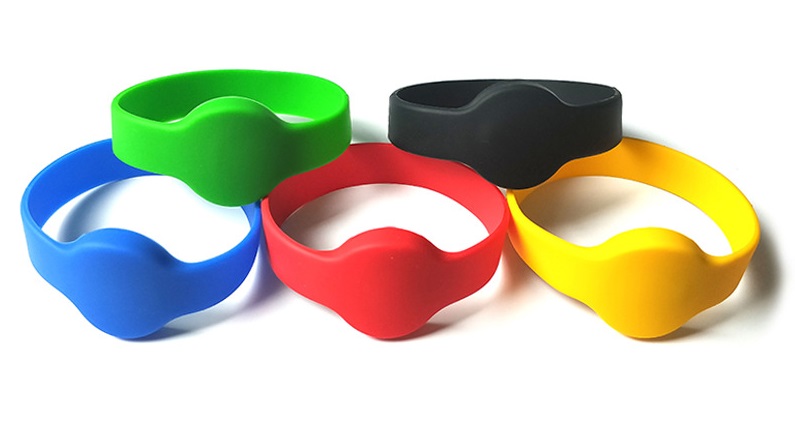An RFID wristband is a type of wristband that uses radio frequency identification (RFID) technology. RFID technology involves the use of a small chip that can be embedded in the wristband, and a reader that can wirelessly communicate with the chip. The chip in an RFID wristband can be used to store information, such as an identification number or access code, and this information can be read by the reader when the wristband is within range. RFID wristbands are often used for identification and access control purposes, such as at music festivals or amusement parks. They can also be used for contactless payment, allowing users to make purchases without having to carry a physical card or cash.

How many types of chips in RFID Wristband?
There are many different types of chips that can be used in RFID wristbands, and the specific type of chip used will depend on the intended application of the wristband. Some common types of chips used in RFID wristbands include:
- Low-frequency (LF) chips, which operate at a frequency of 125-134 kHz and have a short read range of about 10 cm.
- High-frequency (HF) chips, which operate at a frequency of 13.56 MHz and have a longer read range of up to 1 meter.
- Ultra-high-frequency (UHF) chips, which operate at a frequency of 860-960 MHz and have a read range of up to 10 meters.
Usually 13.56Mhz is more comment in the market.
RFID Wristband can be customized logo ?
Yes, many RFID wristbands can be customized with logos or other designs. This is typically done by printing the desired design onto the surface of the wristband using a specialized printer. Some RFID wristbands also allow for the insertion of a clear plastic sleeve that can hold a printed insert, allowing for even more customization options.
Logo should be simple and less than 3 colors.
RFID wristbands are used in a variety of settings, including:
- Music festivals and other events, where they can be used for identification and access control.
- Amusement parks, where they can be used for identification, access control, and contactless payment.
- Hospitals and other healthcare facilities, where they can be used for patient identification and tracking.
- Hotels and resorts, where they can be used for guest identification and access to services such as swimming pools or fitness centers.
- Sports stadiums and arenas, where they can be used for identification and access control.
In general, RFID wristbands are used whenever a quick, convenient, and secure method of identification and tracking is needed.

